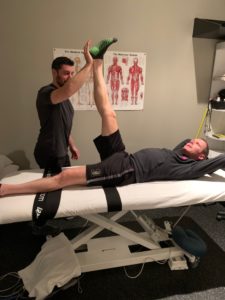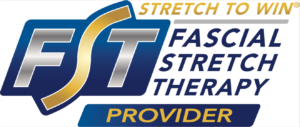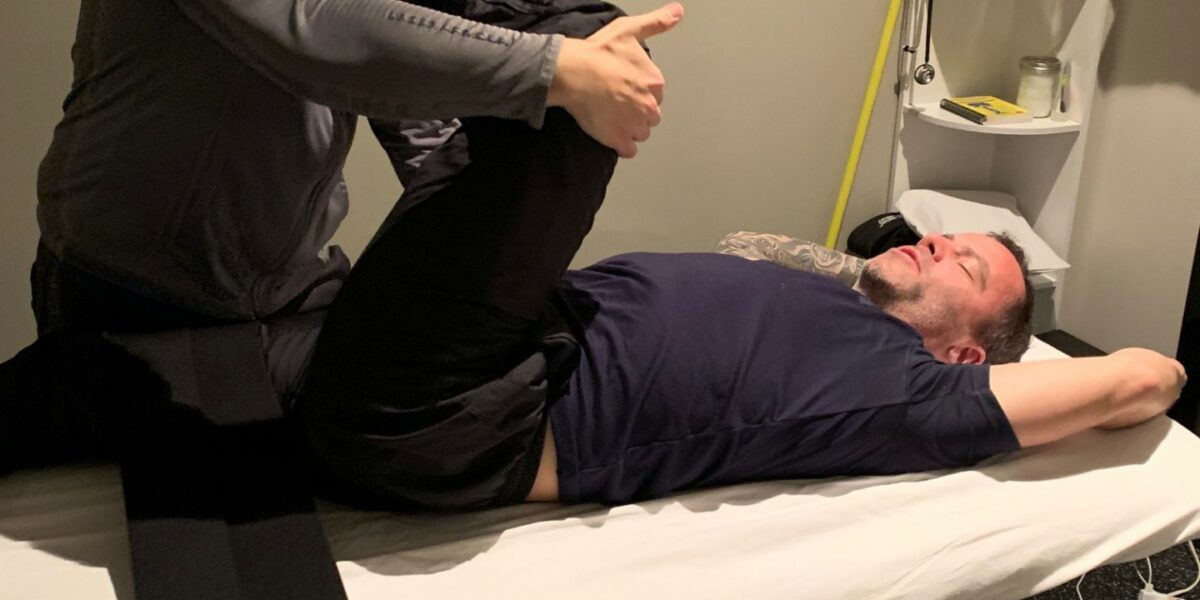Fascial Stretch Therapy is coming to your favorite personal training studio in Kitsilano! In this article, we will be explaining:
- What is Fascial Stretch Therapy?
- What are the benefits of Fascial Stretch Therapy?
- How it fits in your exercise program.
What is FASCIAL STRETCH THERAPY (FST)?
FST is a pain free, assisted method of stretching that will help you increase your flexibility and fitness. It is complementary to any stretching or foam rolling you might be doing at the moment.
The session is designed to re-balance your body as a whole, and decompress your joints before applying a long lasting stretch. It will help you recover between those hard fat-burning or weight-lifting sessions, and get you ready for your next workout.
During an FST session you will be laying comfortably on our massage table. A personal trainer will be moving your body in a sequence of movement and guiding your body, gently pulling it in the right path. You will feel almost instantly more relaxed, lighter and will be moving with more ease. Usually those nagging aches will be reduced after just a couple of sessions.
Make sure to wear athletic clothing as you don’t want those tight jeans keeping your from getting the best results.
Book your first appointment today and move pain free and with more ease.
What is fascia?
Fascia is the term we use for all connective tissue in your body. Fascia includes but isn’t limited to tendons, ligaments, and connective tissue around the muscles. In a way, fascia is the connection between your muscles, bones and nervous system.
This notion of fascia helps us understand and see the body as a whole, not as separate compartments.
Life factors can cause the fascia to be short and tight which can transmit stress unevenly throughout the body.
Tight fascia could be responsible for painful movement, increased muscle tightness, strains, tendon injuries, headaches, scar tissue formation, decreased blood flow and reduced energy levels.
For example a tight shoulder can explain the pain you have in your elbow, and increasing the mobility in the shoulder could be what you need to be pain free.
What are the differences between fascial stretch therapy and other modalities of stretching?
There are any different ways you can stretch your body, but fascial stretch therapy is different in several ways:
- FST targets the whole fascial net, not just muscle.
- FST stretches without pain. “No pain, no gain” doesn’t apply here. We relax the muscle/fascia and gently elongate it. One of the goals is to have you feel more relaxed after just one session!
- FST uses multiples planes of movement. It is a dynamic stretching modality, in other words, you won’t be holding a stretch for a long period of time, rather your body will be guided properly in a movement sequence.
- FST uses traction: it decreases the compression in the joint capsule and allows for a deeper stretch without pain
- FST is an assisted form of stretching, you will be on a table, and the therapist will be moving your body.
What are the benefit of Fascial Stretch Therapy?

- Increased mobility even after only one session.
- Better appearance: a better posture and muscle symmetry will help you look better
- Better recovery: improves blood flow to tired muscles, which helps you to recover faster from your tough training sessions with less soreness.
- Reduced pain and risk of injury by reducing the compression or impingement that can happen in overused joints.
- Improved energy throughout the day.
- Reduced stress level: breathing will be a key part of your session. Breathing deeply activates your para-sympathetic nervous system which is responsible for your relaxation.
How does FST fits in your workout routine?
Stretch therapy is a complementary part of your training program. Therefore you still need to do your cardio, do your fat burn sessions and lift your weights. And of course, you still have to works on those trigger points by spending some time on the foam roller.
Most people need a couple of session per week to start. However, once your body is in a balanced state again, one session per month should be enough to maintain the range of motion you earned with FST.
Also remember to avoid doing a high impact workout right after an FST session. Instead, you would rather want to gently use the new range of motion, and not re tighten your body right away.
Keep this in mind and your FST sessions will help you have a better posture, have better workouts, and have more energy throughout your day!
But Gui, why did you bother learning about fascial stretch therapy?
As many people in the gym know, I love to lift heavy things, including myself. And I want to keep exercising, sweating and rock-climbing for a long time!
As I get older, I realized that I should not only plan my workouts, but also my recovery. FST helps me recover better and faster by decompressing the joints (especially after a heavy kettlebell day), by allowing a better nutrient exchange in the join capsule and relaxing the nervous system.
After a quick restorative fascial stretch session, I feel more relaxed, looser, and more important I feel I can move better. After experiencing all the benefits of Fascial Stretch Therapy, I had to find a way to offer that service to my clients. That’s why I decided to learn the technique and I am now a certified FST provider in Vancouver!
Call us and book your first appointment at your favorite fitness facility!



